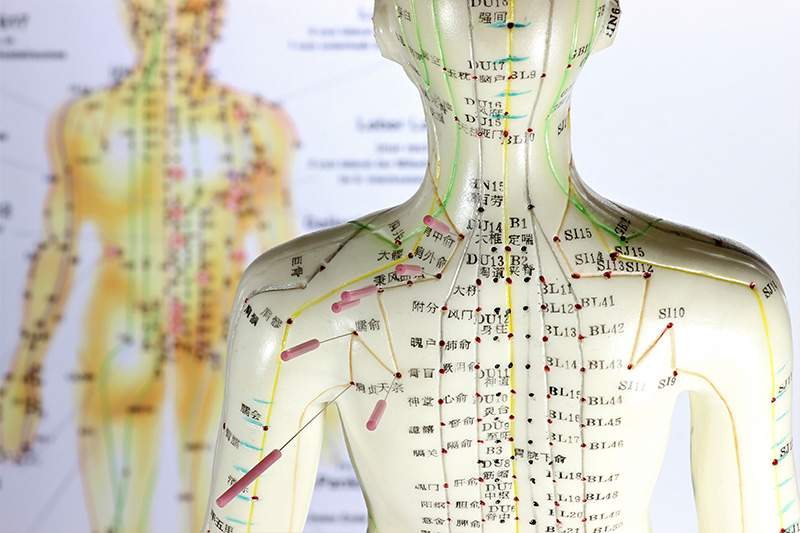Meridians And Acupuncture Points: Understanding The Channels Of Energy Flow

This article explores the concept of meridians and acupuncture points, shedding light on the channels through which energy flows in the body. Rooted in ancient Chinese medicine, acupuncture has been practiced for thousands of years and is widely recognized for its therapeutic benefits.
Meridians, or energy pathways, form the basis of acupuncture theory, serving as the routes through which vital energy, or Qi, circulates. Acupuncture points are specific locations along these meridians where the flow of Qi can be accessed and regulated.
By understanding the intricate network of meridians and the role of acupuncture points, individuals can gain insight into the underlying principles of acupuncture and its potential to address various health issues.
Additionally, this article delves into the scientific evidence supporting acupuncture and provides guidance on selecting a qualified acupuncturist, as well as incorporating acupuncture into a comprehensive wellness routine.
The History and Origins of Acupuncture
The history and origins of acupuncture can be traced back to ancient China, where it was developed as a form of medical treatment based on the concept of balancing energy flow within the body.
Acupuncture is believed to have originated around 2,500 years ago, during the Warring States period. The earliest written records of acupuncture can be found in the Huangdi Neijing, also known as the Yellow Emperor’s Inner Canon, which is considered one of the oldest and most important texts in traditional Chinese medicine.
According to this text, acupuncture works by stimulating specific points on the body, known as acupuncture points or acupoints, to regulate the flow of qi, or vital energy, along meridians or channels.
Over time, acupuncture spread to other parts of East Asia and eventually made its way to the Western world, where it has gained popularity as an alternative and complementary therapy.
The Concept of Meridians in Traditional Chinese Medicine
An integral part of Traditional Chinese Medicine involves the understanding and exploration of the complex network of pathways that facilitate the movement of vital energy throughout the body. These pathways, known as meridians, are believed to connect various organs and tissues, forming a comprehensive system that regulates the flow of Qi, or life force energy.
According to traditional Chinese medicine, there are twelve primary meridians, each associated with a specific organ or function in the body. These meridians are further divided into hundreds of acupuncture points, which are specific locations along the meridians where the flow of Qi can be stimulated or regulated.
The concept of meridians and acupuncture points forms the foundation of acupuncture therapy, as the insertion of needles into specific points along the meridians is believed to restore balance and promote the body’s natural healing processes.
The Role of Acupuncture Points
This paragraph introduces a discussion on the role of acupuncture points, specifically focusing on how they are identified and the effects of stimulating them.
Acupuncture points are identified based on a combination of anatomical landmarks and traditional knowledge, such as the location of meridians and the palpation of specific points.
Stimulating these acupuncture points is believed to have various effects on the body, including promoting the flow of Qi, regulating the balance of Yin and Yang, and alleviating pain or other symptoms.
How Acupuncture Points Are Identified
Identifying acupuncture points involves a systematic examination of the body’s channels and reference texts to locate specific anatomical landmarks. Acupuncture points are typically identified based on their location along the meridians or channels of energy flow in the body. These channels are believed to connect various parts of the body and are named after the organs or body systems they correspond to. To identify acupuncture points, practitioners rely on reference texts that provide detailed descriptions and diagrams of the meridians and their associated points. These texts include information on the location, depth, and specific anatomical landmarks used to locate each point accurately. Additionally, practitioners may also rely on palpation techniques to feel for specific sensations or reactions at the acupuncture points, further confirming their location.
The Effects of Stimulating Acupuncture Points
Stimulating acupuncture points has been found to elicit various physiological responses in the body, indicating the potential therapeutic effects of acupuncture.
Research has shown that acupuncture stimulation can activate the release of endorphins, which are natural pain-relieving substances in the body. This can lead to pain reduction and analgesic effects.
Additionally, acupuncture has been found to modulate the autonomic nervous system, resulting in changes in heart rate, blood pressure, and body temperature.
Studies have also suggested that acupuncture can affect the release of neurotransmitters, such as serotonin and dopamine, which are involved in mood regulation.
Furthermore, acupuncture stimulation has been shown to have anti-inflammatory effects, promoting the release of anti-inflammatory substances and inhibiting the production of pro-inflammatory cytokines.
Overall, these physiological responses indicate the potential therapeutic benefits of stimulating acupuncture points.
Understanding Energy Flow in the Body
Understanding energy flow in the body is essential for comprehending the meridians and acupuncture points and their role in promoting holistic health.
Energy, known as qi, flows through the body in specific channels called meridians. These meridians form a complex network that connects different organs and tissues, creating a balance within the body.
The flow of energy can become disrupted, leading to various physical and mental health issues.
Acupuncture points, located along the meridians, can be stimulated to restore the proper flow of qi and restore balance.
To understand energy flow in the body, it is important to consider the following:
- Qi is a vital force that circulates through the meridians.
- Meridians are pathways that connect different parts of the body.
- Stimulating acupuncture points can regulate the flow of qi and restore balance.
By understanding the intricate network of meridians and the flow of energy, individuals can optimize their health and well-being through acupuncture.
Common Health Issues Addressed by Acupuncture
A wide range of health issues can be effectively addressed through the practice of acupuncture, providing individuals with a holistic approach to improving their well-being. Acupuncture has been found to be beneficial in treating various conditions such as chronic pain, migraines, anxiety, insomnia, and digestive disorders. By stimulating specific acupuncture points along the meridians, energy flow is restored, promoting the body’s natural healing process. Research has shown that acupuncture can reduce pain and inflammation, enhance immune function, and improve mental well-being. Additionally, acupuncture can be used as a complementary therapy alongside conventional medical treatments, enhancing their efficacy and reducing side effects. It is important to note that acupuncture should be administered by a trained and licensed practitioner to ensure safety and effectiveness.
| Health Issues Addressed by Acupuncture | ||
|---|---|---|
| Chronic Pain | ||
| Migraines | ||
| Anxiety | ||
| Insomnia | ||
| Digestive Disorders | Hormonal Imbalances | |
| Allergies | ||
| Fatigue | ||
| Depression | ||
| Asthma | ||
| Arthritis | ||
| Menstrual cramps | ||
| Infertility | ||
| Nausea and vomiting | ||
| Respiratory conditions | ||
| Addiction and cravings | ||
| Post-operative pain | ||
| Stroke rehabilitation | ||
| Sports injuries | ||
| High blood pressure | ||
| Immune system disorders | ||
| Weight management | ||
| Skin conditions | ||
| Side effects of cancer treatment | ||
| Pregnancy-related conditions | ||
| Menopause symptoms |
The Science Behind Acupuncture
The effectiveness of acupuncture has been extensively studied and researched, shedding light on the scientific mechanisms behind its therapeutic benefits.
Acupuncture is believed to stimulate the body’s natural healing processes by regulating the flow of energy, or Qi, along specific pathways known as meridians. These meridians are thought to connect different parts of the body and correspond to specific organs and functions. According to traditional Chinese medicine, when the flow of Qi is disrupted or blocked, it can lead to health issues.
Acupuncture points, which are specific locations along the meridians, are stimulated with thin needles to restore the balance and flow of Qi.
Modern scientific research has shown that acupuncture can stimulate the release of endorphins, neurotransmitters, and other substances that have pain-relieving and anti-inflammatory effects. Additionally, acupuncture may help regulate the autonomic nervous system and modulate immune responses.
Choosing an Acupuncturist and Treatment Process
This discussion will focus on two key points related to choosing an acupuncturist and the treatment process: qualifications and certifications, and what to expect during an acupuncture session.
Qualifications and certifications are important factors to consider when selecting an acupuncturist as they provide assurance of their training and expertise in this specialized field.
Understanding what to expect during an acupuncture session can help patients prepare themselves mentally and physically, ensuring a positive and effective treatment experience.
Qualifications and Certifications
Qualifications and certifications for understanding the meridians and acupuncture points require a thorough understanding of the channels of energy flow. In order to effectively manipulate the meridians and acupuncture points, practitioners must possess the necessary knowledge and skills.
Here are four important qualifications and certifications for individuals seeking to specialize in this field:
- Acupuncture License: A valid license is essential for practicing acupuncture and ensures that the practitioner meets the necessary educational and training requirements.
- Board Certification: Board certification from reputable organizations such as the National Certification Commission for Acupuncture and Oriental Medicine (NCCAOM) demonstrates that the practitioner has met specific standards of competency in the field.
- Continuing Education: Engaging in ongoing education and training is crucial for acupuncturists to stay updated with the latest research, techniques, and advancements in the field.
- Specialization: Acupuncturists may choose to specialize in certain areas such as pain management, fertility, or sports medicine. Obtaining additional certifications or qualifications in these specialized areas enhances their expertise and ability to provide targeted treatments.
By acquiring these qualifications and certifications, practitioners can ensure they possess the necessary skills and knowledge to understand and effectively manipulate the meridians and acupuncture points.
What to Expect During an Acupuncture Session
During an acupuncture session, patients can expect a practitioner to carefully insert thin needles into specific points on their body to promote balance and stimulate the body’s natural healing processes. The needles used in acupuncture are typically very thin, about the width of a hair, and are inserted into the skin at varying depths depending on the specific condition being treated. The insertion of the needles is generally painless, although some patients may experience a slight tingling or dull ache sensation.
Once the needles are in place, patients are typically left to relax for a period of time, usually about 20-30 minutes, while the needles work to stimulate the body’s energy flow. During this time, patients may experience a sense of calm and relaxation.
After the session, patients may feel energized or may experience a sense of release and relief from pain or discomfort. It is important for patients to communicate openly with their practitioner and provide feedback on their experience to ensure the best possible outcome.
Incorporating Acupuncture into Your Wellness Routine
Acupuncture can be seamlessly integrated into one’s wellness routine to promote balance and enhance overall well-being. By incorporating regular acupuncture sessions into a wellness routine, individuals can experience a variety of benefits, including reduced stress, improved sleep, increased energy levels, and enhanced immune function. Acupuncture works by stimulating specific acupuncture points along the meridians, which are channels of energy flow in the body. This ancient practice is based on the belief that the body’s energy, or qi, can become imbalanced, leading to various health issues. By targeting specific acupuncture points, acupuncturists aim to restore the flow of qi and restore balance to the body. To illustrate the effectiveness of acupuncture, a table can be used to highlight common health conditions, corresponding acupuncture points, and potential benefits of treatment. This visual aid can help captivate the audience and further engage them in the discussion.
Frequently Asked Questions
How long does an acupuncture session usually last?
An acupuncture session typically lasts between 30 to 60 minutes, depending on the individual’s needs and the complexity of the condition being treated. The duration allows for the proper insertion and retention of the needles to stimulate energy flow and promote healing.
Are there any side effects or risks associated with acupuncture?
There are potential side effects and risks associated with acupuncture. These include bruising, bleeding, infection, and organ injury. However, the overall incidence of serious adverse events is low when performed by qualified practitioners under appropriate conditions.
Can acupuncture help with mental health conditions such as anxiety or depression?
Acupuncture has been found to have potential benefits for mental health conditions such as anxiety and depression. Research suggests that it may help reduce symptoms and improve overall well-being, although more studies are needed to confirm these findings.
Is acupuncture covered by health insurance?
Acupuncture coverage by health insurance varies depending on the specific insurance plan. Some insurance plans may cover acupuncture as a form of alternative therapy, while others may not provide coverage. It is important to check with individual insurance providers for specific coverage details.
How many sessions of acupuncture are typically needed to see results?
On average, multiple sessions of acupuncture are typically needed to see results. The number of sessions required can vary depending on the individual and the specific condition being treated.








